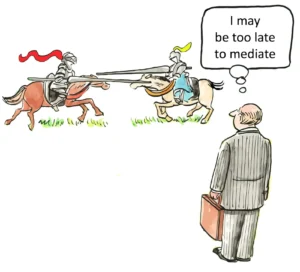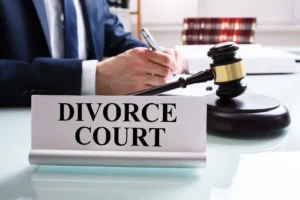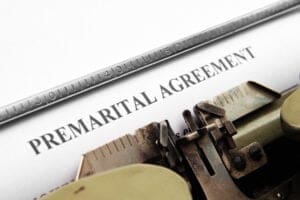Medical Malpractice Evidence: Essential Legal Framework for Proving Healthcare Negligence in American Courts
Individuals facing potential medical malpractice claims frequently ask, “What types of evidence will successfully prove that my healthcare provider was negligent?” The answer is that medical malpractice evidence requires a comprehensive combination of medical records, expert testimony, and documentation that establishes four critical elements: duty of care, breach of that duty, causation, and damages. Unlike standard personal injury cases, healthcare negligence litigation demands sophisticated understanding of medical standards, professional protocols, and complex causation relationships that require expert medical testimony to translate technical concepts for judges and juries.
Medical negligence claims represent one of the most evidence-intensive areas of civil litigation, requiring plaintiffs to overcome strong legal protections for healthcare providers while navigating complex medical concepts and professional standards. The legal framework balances patient protection rights with healthcare provider safeguards, ensuring that legitimate malpractice claims succeed while preventing frivolous litigation that could undermine healthcare delivery.
What Constitutional Protections Apply to Medical Malpractice Evidence?
Due process rights under the Fifth and Fourteenth Amendments establish the constitutional foundation for medical malpractice evidence presentation, ensuring that both patients and healthcare providers receive fair treatment in legal proceedings involving complex medical testimony and professional standard determinations. These fundamental protections require that evidence collection and presentation follow established legal procedures while respecting both patient privacy rights and provider professional privileges.
The constitutional framework recognizes that medical malpractice cases involve property rights to compensation for medical injuries while simultaneously protecting healthcare providers’ rights to professional practice and reputation. Equal protection principles ensure that evidence standards apply consistently across similar medical cases while preventing discriminatory application of evidentiary requirements that could disadvantage particular patient populations or medical specialties.
Federal Standards and State Implementation
Federal medical privacy laws including HIPAA create baseline protections for patient medical information while providing litigation exceptions that allow necessary evidence disclosure in malpractice cases. These federal frameworks establish minimum privacy standards while allowing states to develop additional protections and procedures for medical evidence handling.
State courts handle most medical malpractice cases under state-specific evidence rules and medical malpractice statutes that vary significantly in their requirements for expert testimony, damage caps, and procedural safeguards. This decentralized approach allows states to adapt medical malpractice law to local healthcare markets and legal traditions while maintaining constitutional compliance.
Interstate medical practice creates jurisdictional complexity when healthcare providers practice across state lines or when patients receive treatment in multiple states, requiring careful analysis of which state’s evidence rules and medical standards apply to specific malpractice claims.
How Do State Laws Create Different Evidence Standards for Medical Malpractice?
State variations in medical malpractice evidence requirements reflect different policy approaches to balancing patient protection against healthcare provider safeguards and litigation cost control. Some states require detailed affidavits of merit before allowing malpractice cases to proceed, while others impose strict expert witness qualification requirements that limit available testimony sources.
Texas maintains comprehensive medical malpractice reforms including expert witness requirements that mandate same-specialty testimony and detailed qualifications for medical expert witnesses. This approach contrasts with states like California that provide broader expert witness flexibility while maintaining damage caps and other litigation controls designed to balance patient rights with healthcare system stability.
Regional Approaches to Medical Evidence Standards
Southern states generally maintain healthcare provider-friendly evidence requirements with strict expert witness qualifications and comprehensive liability protections that reflect regional priorities for maintaining healthcare access and controlling litigation costs. States like Florida and Georgia have implemented detailed medical malpractice reforms that emphasize evidence quality over quantity.
Western jurisdictions often provide more patient-friendly evidence rules with broader expert witness acceptance and comprehensive discovery rights that support thorough case development. California’s liberal evidence standards allow extensive medical expert testimony while maintaining damage caps that balance patient compensation with healthcare system stability.
Northeastern states typically feature sophisticated evidence frameworks with detailed appellate guidance on medical expert qualifications and standard of care determinations. These jurisdictions often maintain comprehensive patient protection measures while ensuring adequate healthcare provider safeguards.
When Do Medical Records Become Crucial Evidence in Malpractice Cases?
Complete medical records provide the foundation for all medical malpractice cases, establishing treatment chronology, decision-making processes, and outcome documentation that support or refute negligence claims. Hospital records, physician notes, nursing documentation, and diagnostic test results create comprehensive evidence trails that expert witnesses use to evaluate care appropriateness.
Electronic health records have transformed medical evidence collection by providing detailed timestamps, medication tracking, and comprehensive treatment documentation that may reveal care gaps or protocol violations not apparent in traditional paper records. These digital systems create more extensive evidence trails while also providing healthcare providers with better documentation defenses.
Specialized Medical Documentation
Diagnostic imaging including X-rays, CT scans, MRI studies, and ultrasound examinations provides objective evidence of medical conditions and treatment outcomes that expert witnesses use to evaluate diagnostic accuracy and treatment appropriateness in malpractice claims.
Laboratory results and pathology reports create objective medical evidence that supports or contradicts healthcare provider decision-making while providing independent verification of patient conditions and treatment responses that inform malpractice liability analysis.
Surgical records including operative reports, anesthesia records, and post-operative documentation provide detailed evidence of procedural care that expert witnesses evaluate for compliance with surgical standards and identification of potential negligence during medical procedures.
What Role Do Expert Medical Witnesses Play in Malpractice Evidence?
Medical expert testimony serves as the cornerstone of malpractice evidence presentation, as lay juries cannot evaluate complex medical decisions without professional guidance about appropriate standards of care and causation relationships. Expert witnesses translate medical complexity into understandable terms while providing professional opinions about healthcare provider conduct.
Expert witness qualifications vary significantly between states, with some jurisdictions requiring same-specialty experts while others allow broader medical expertise. These qualification requirements affect case strategy and evidence presentation while ensuring that expert testimony meets reliability standards for complex medical issues.
Specialized Expert Categories
Treating physician testimony provides firsthand knowledge of patient conditions and treatment decisions while offering professional opinions about care appropriateness and outcome causation. These witnesses possess detailed case knowledge but may face conflicts between patient advocacy and professional colleague relationships.
Independent medical experts offer objective professional opinions about standard of care compliance and causation issues without the potential conflicts that treating physicians may experience. These experts typically provide more credible testimony while requiring comprehensive case material review and preparation.
Specialty-specific experts including surgeons, anesthesiologists, and radiologists provide focused professional opinions about specialized care areas that require technical expertise beyond general medical knowledge. These specialists offer authoritative testimony about complex procedures and specialized standards.
How Do Medical Standards of Care Affect Evidence Requirements?
Professional standards established by medical specialty organizations create baseline expectations for healthcare delivery that serve as benchmarks for malpractice liability determination. These standards evolve continuously through professional consensus and research developments that affect evidence evaluation in malpractice cases.
Local standards versus national standards represent ongoing legal debates about appropriate care benchmarks, with some jurisdictions applying community-based standards while others require compliance with national professional guidelines regardless of local practice patterns.
Evidence of Standard Violations
Protocol deviations from established medical procedures provide strong evidence of potential negligence when expert witnesses can demonstrate that departures from standard protocols contributed to patient injuries. These violations require careful analysis to distinguish between reasonable medical judgment and negligent care.
Documentation failures may constitute evidence of negligent care when healthcare providers fail to maintain adequate records or document important clinical decisions that affect patient safety and treatment continuity. Poor documentation may also hamper malpractice defense efforts.
Communication breakdowns between healthcare team members or between providers and patients may constitute evidence of negligent care when these failures contribute to treatment errors or patient safety incidents that result in preventable injuries.
What Types of Damages Evidence Strengthen Medical Malpractice Claims?
Economic damages in medical malpractice cases require comprehensive documentation of medical expenses, lost wages, and future care needs that result from healthcare negligence. Professional economic analysis helps calculate lifetime care costs for catastrophic medical injuries that require ongoing treatment and support services.
Life care planning by qualified medical professionals establishes future medical needs and associated costs for severely injured patients, providing detailed projections that support substantial damage claims while ensuring adequate compensation for long-term care requirements.
Non-Economic Damage Evidence
Pain and suffering documentation requires evidence of physical discomfort, emotional distress, and quality of life impacts that result from medical negligence. This evidence includes patient testimony, family observations, and professional psychological evaluation of injury impacts.
Loss of consortium claims by spouses and family members require evidence of relationship impacts and family disruption that result from medical injuries, supporting additional compensation for family members affected by healthcare negligence.
Functional limitation evidence demonstrates how medical injuries affect daily activities, work capacity, and life enjoyment through detailed documentation of disability impacts and accommodation requirements that support comprehensive damage calculations.
How Do Hospital Policies and Procedures Affect Malpractice Evidence?
Institutional protocols create evidence standards for hospital-based malpractice claims, as facility policies establish expected care procedures that may be violated during patient treatment. These internal standards often exceed minimum legal requirements and provide additional evidence sources for negligence claims.
Quality assurance records and incident reports may provide crucial evidence about systemic care problems or specific treatment failures, though these records often receive legal protections that limit their admissibility in malpractice litigation.
Corporate Healthcare Liability
Credentialing failures by hospitals and healthcare systems may create institutional liability when facilities fail to properly evaluate physician qualifications or monitor ongoing competence issues that contribute to patient injuries.
Staffing inadequacies including nurse-to-patient ratios and physician coverage levels may constitute evidence of institutional negligence when inadequate staffing contributes to patient safety incidents and preventable medical errors.
Equipment maintenance records and device failure documentation provide evidence about institutional responsibilities for medical device safety and proper maintenance that affects patient care quality and safety outcomes.
What Role Does Informed Consent Play in Medical Malpractice Evidence?
Consent documentation provides crucial evidence about patient knowledge and voluntary agreement to medical procedures, establishing whether healthcare providers met disclosure obligations about treatment risks and alternative options. Inadequate consent processes may constitute independent negligence claims.
Risk disclosure requirements vary by state but generally mandate disclosure of material risks that reasonable patients would consider important in treatment decisions. Failure to provide adequate risk information may support malpractice claims regardless of whether technical care met professional standards.
Consent-Related Evidence Issues
Language barriers and communication difficulties may affect consent validity when patients do not fully understand disclosed risks due to cultural, linguistic, or educational factors that healthcare providers failed to address adequately during consent processes.
Capacity assessments become crucial when patients’ decision-making ability is questioned, requiring evidence about mental competence and surrogate decision-making authority that affects consent validity and treatment liability.
Emergency situations may excuse detailed consent procedures, but healthcare providers must document emergency circumstances and reasonable efforts to obtain consent when possible, creating evidence issues about consent exceptions and emergency care standards.
How Do Medical Device and Pharmaceutical Issues Affect Evidence Collection?
Product liability claims may intersect with medical malpractice when defective medical devices or pharmaceuticals contribute to patient injuries, requiring coordination between professional negligence evidence and product defect analysis that addresses multiple liability theories.
FDA recalls and safety alerts provide evidence about known risks and defects that may support both product liability and malpractice claims when healthcare providers continue using recalled devices or fail to monitor for known adverse effects.
Regulatory Compliance Evidence
Off-label use of medical devices and pharmaceuticals may create evidence issues about appropriate medical judgment versus negligent prescribing when healthcare providers use approved products for non-approved indications.
Clinical trial participation may affect malpractice evidence when patients are injured during experimental treatments, requiring analysis of research protocols and informed consent adequacy for investigational procedures.
Regulatory violations by healthcare facilities or providers may constitute evidence of negligent care when violations of FDA, DEA, or other federal regulations contribute to patient safety incidents and preventable injuries.
What Discovery Procedures Affect Medical Malpractice Evidence?
Medical record discovery requires comprehensive requests that capture all relevant treatment documentation while addressing healthcare provider attempts to limit record production through privilege claims or scope limitations.
Expert witness discovery involves detailed disclosure requirements about expert qualifications, opinions, and underlying analyses that affect testimony admissibility and cross-examination preparation for effective impeachment strategies.
Privileged Information Challenges
Peer review privilege protects many hospital quality assurance activities from discovery, limiting plaintiff access to institutional self-evaluation processes that might reveal systemic care problems or provider competence issues.
Attorney-client privilege and work product protection may limit discovery of healthcare provider communications with legal counsel and litigation preparation materials that could provide evidence about liability recognition or defense strategies.
Medical staff privileges and credentialing files often receive legal protection that prevents plaintiff access to provider competence evaluations and disciplinary actions that might support negligence claims or impeachment evidence.
How Do Causation Issues Affect Medical Malpractice Evidence Strategy?
Proximate causation requirements in medical malpractice cases demand evidence that healthcare provider negligence directly caused or substantially contributed to patient injuries rather than merely creating risks that did not materialize into actual harm.
Multiple causation scenarios arise frequently in medical cases where patient conditions, treatment complications, and provider actions all contribute to adverse outcomes, requiring sophisticated analysis to establish negligence causation versus inevitable medical risks.
Complex Causation Analysis
Pre-existing conditions complicate causation analysis when patient health problems contribute to adverse outcomes, requiring expert testimony that distinguishes between natural disease progression and treatment-related injuries that constitute compensable harm.
Intervening causes including subsequent treatment decisions or patient non-compliance may break causation chains between alleged negligence and claimed injuries, requiring careful evidence analysis to maintain viable causation arguments.
Lost chance theories allow recovery in some jurisdictions when negligence reduces survival or recovery prospects even when ultimate outcomes might have occurred regardless, requiring statistical evidence about probability changes caused by negligent care.
What Technology Evidence Enhances Modern Malpractice Cases?
Electronic monitoring systems in hospitals provide detailed data about patient vital signs, medication administration, and physiological changes that may reveal care inadequacies or protocol violations not apparent from traditional documentation sources.
Telemedicine records including video consultations and remote monitoring data create new evidence categories that require analysis of virtual care standards and technology-mediated communication adequacy in healthcare delivery.
Digital Health Evidence
Mobile health applications and wearable device data may provide objective evidence about patient conditions and treatment responses that supplement traditional medical records while raising questions about data reliability and clinical significance.
Artificial intelligence diagnostic tools create new evidence issues about algorithm accuracy and healthcare provider reliance on automated systems, requiring expert analysis about appropriate technology integration and clinical decision-making.
Genomic testing results and personalized medicine protocols may provide evidence about individualized care appropriateness while requiring specialized expert testimony about genetic medicine standards and personalized treatment protocols.
How Do Specialized Medical Fields Create Unique Evidence Requirements?
Surgical malpractice cases require detailed evidence about procedural standards, complication rates, and technical execution that demand specialty-specific expert testimony and comprehensive operative record analysis.
Diagnostic errors represent significant malpractice categories requiring evidence about diagnostic processes, differential diagnosis consideration, and test interpretation accuracy that affect treatment decisions and patient outcomes.
Specialty-Specific Evidence Challenges
Emergency medicine malpractice involves unique evidence issues about time pressures, resource limitations, and standard of care modifications that apply in emergency situations where complete diagnostic workups may not be feasible.
Obstetric care cases require specialized evidence about fetal monitoring, labor management, and birth injury causation that demand maternal-fetal medicine expertise and detailed analysis of perinatal care standards.
Anesthesia malpractice involves technical evidence about drug administration, patient monitoring, and physiological management that requires anesthesiology expertise and detailed analysis of perioperative care protocols.
What Role Do Medical Guidelines and Protocols Play as Evidence?
Clinical practice guidelines from professional medical organizations provide evidence standards that expert witnesses use to evaluate care appropriateness while creating benchmarks for negligence determination in malpractice litigation.
Hospital protocols and institutional policies establish facility-specific care standards that may exceed minimum legal requirements and provide additional evidence sources for negligence claims when protocols are violated during patient care.
Guideline Application Challenges
Guideline updates and evolving medical knowledge create evidence issues about appropriate standards for historical treatment decisions, requiring careful analysis of applicable knowledge and standards at the time of alleged negligent care.
Resource limitations may affect guideline compliance when healthcare facilities lack necessary equipment or personnel to follow optimal care protocols, creating complex liability issues about institutional responsibilities versus individual provider duties.
Patient-specific modifications of standard protocols require evidence about appropriate medical judgment versus negligent deviation from established care guidelines when individual circumstances warrant alternative treatment approaches.
How Do Damage Caps and Tort Reform Affect Evidence Strategy?
Statutory damage limits in many states affect evidence presentation strategy by limiting potential recovery amounts and changing cost-benefit analyses for malpractice litigation, influencing decisions about case pursuit and evidence development intensity.
Certificate of merit requirements in numerous jurisdictions mandate preliminary expert review before malpractice cases can proceed, affecting evidence development timing and requiring early case evaluation by qualified medical experts.
Reform Impact on Evidence
Expert witness qualifications requirements have been enhanced in many states through tort reform legislation that mandates same-specialty expertise and detailed credential requirements that affect available expert testimony sources.
Statute of limitations modifications including discovery rules and repose periods affect evidence preservation and case development timing, requiring prompt action to secure medical records and expert testimony before limitation periods expire.
Apology laws protecting healthcare provider expressions of sympathy from admission as liability admissions may limit available evidence while encouraging provider-patient communication about adverse outcomes.
What Alternative Dispute Resolution Options Affect Medical Evidence?
Medical malpractice arbitration may provide faster case resolution while involving different evidence presentation requirements and expert testimony formats that adapt traditional trial advocacy to arbitration procedures.
Mediation services for medical disputes offer collaborative resolution opportunities while requiring evidence organization that supports negotiated settlements rather than adversarial litigation strategies.
ADR Evidence Considerations
Confidentiality protections in mediation prevent disclosure of settlement discussions while requiring careful evidence handling to avoid compromising trial options if alternative dispute resolution efforts prove unsuccessful.
Arbitrator expertise in medical arbitration may reduce expert witness requirements when arbitrators possess medical backgrounds, though most arbitrators are attorneys who require comprehensive expert testimony for medical issue resolution.
Expedited procedures in alternative dispute resolution require streamlined evidence presentation while maintaining comprehensive case development that supports favorable outcomes through abbreviated proceedings.
How Do Professional Licensing Issues Intersect with Malpractice Evidence?
Medical board disciplinary actions may provide evidence of professional standard violations while creating additional consequences for healthcare providers beyond civil malpractice liability, requiring coordination between civil litigation and regulatory proceedings.
Credential verification and provider background investigation may reveal prior malpractice claims or disciplinary actions that support current negligence allegations while providing impeachment evidence about provider competence.
Regulatory Evidence Integration
Hospital privileges and credentialing decisions may reflect institutional assessments of provider competence that support or contradict malpractice allegations, though these evaluations often receive legal protection through peer review privileges.
Continuing education compliance and professional development records may provide evidence about provider knowledge and competence maintenance that affects negligence liability and standard of care compliance.
Professional organization membership and board certification status may influence expert witness qualifications and credibility while providing evidence about provider commitment to professional standards and ongoing competence maintenance.
What Economic Evidence Supports Medical Malpractice Damage Claims?
Healthcare cost analysis requires comprehensive documentation of current and future medical expenses that result from alleged negligence, including treatment costs, rehabilitation expenses, and ongoing care requirements that support substantial damage claims.
Earning capacity evaluations for patients whose injuries affect work ability require vocational expert testimony and economic analysis that considers career impact and lost income potential resulting from medical negligence.
Financial Impact Documentation
Life expectancy calculations affect damage awards for catastrophic medical injuries that require lifetime care, demanding actuarial analysis and medical expert testimony about injury impacts on longevity and quality of life.
Inflation adjustments and present value calculations ensure that future damage awards provide adequate compensation for ongoing expenses while accounting for economic factors that affect long-term financial adequacy.
Collateral source rules in many states prevent reduction of damage awards for insurance benefits or other compensation sources, requiring careful evidence handling to avoid prejudicial disclosure of plaintiff insurance coverage.
How Do Quality Measures and Patient Safety Data Affect Evidence?
Hospital quality ratings and patient safety scores may provide circumstantial evidence about institutional care quality while requiring careful analysis to establish relevance to specific malpractice allegations and individual case circumstances.
Infection control data and nosocomial infection rates may support malpractice claims involving hospital-acquired infections while requiring expert testimony about causation and preventability of specific infection incidents.
Safety System Evidence
Medication error reporting systems and adverse event databases may provide evidence about systemic care problems while often receiving legal protections that limit admissibility in individual malpractice cases.
Root cause analysis reports from healthcare institutions may reveal systemic causes of adverse events while typically receiving peer review privilege protection that prevents plaintiff access to institutional self-evaluation processes.
Patient safety indicators and quality metrics may provide context for malpractice allegations while requiring expert testimony about the relationship between general quality measures and specific care inadequacies.
What Emerging Trends Affect Medical Malpractice Evidence?
Artificial intelligence integration in healthcare creates new liability questions about algorithm accuracy, provider oversight responsibilities, and appropriate reliance on automated diagnostic and treatment recommendations that may affect malpractice evidence standards.
Telemedicine expansion following the COVID-19 pandemic creates new evidence categories involving virtual care standards, technology adequacy, and remote patient monitoring that require development of new expert testimony standards.
Technology Integration Challenges
Electronic health records interoperability issues may create evidence problems when patient information fails to transfer accurately between healthcare systems, potentially contributing to treatment errors and malpractice liability.
Mobile health applications and patient-generated data create new evidence sources while raising questions about clinical reliability and provider obligations to monitor and respond to patient-collected health information.
Precision medicine based on genetic testing and personalized treatment protocols requires new expert testimony standards about individualized care appropriateness and genomic medicine competence that affect malpractice liability determination.
Understanding the Constitutional Balance in Medical Malpractice Evidence
Individual rights to compensation for medical injuries must be balanced against healthcare provider rights to professional practice and system-wide interests in healthcare access and quality that serve broader public health objectives.
Due process protections ensure fair treatment for both patients and healthcare providers while maintaining evidence standards that promote accurate liability determination and appropriate compensation for legitimate medical negligence claims.
Healthcare System Integrity
Professional autonomy in medical decision-making requires evidence standards that distinguish between reasonable medical judgment and negligent care while maintaining provider authority to exercise clinical discretion based on individual patient circumstances.
Healthcare access considerations influence malpractice law development as excessive litigation may reduce provider availability or increase defensive medicine practices that affect healthcare cost and accessibility for all patients.
Patient safety improvements through malpractice liability create beneficial incentives for quality improvement while ensuring that evidence standards support legitimate claims rather than frivolous litigation that could undermine healthcare delivery.
The constitutional framework surrounding medical malpractice evidence reflects fundamental American principles about individual rights to compensation, professional accountability, and the proper balance between patient protection and healthcare system stability. Due process requirements ensure fair evidence standards for both patients and healthcare providers while maintaining judicial mechanisms that serve both individual justice and broader public health interests.
State variations in medical malpractice evidence law demonstrate federalism principles at work, with different jurisdictions developing approaches that reflect regional healthcare markets, legal traditions, and policy priorities while maintaining basic constitutional protections. These differences require sophisticated legal understanding when cases involve multiple states or federal healthcare programs.
Modern medical complexity continues expanding through technological advances, specialized treatments, and evolving professional standards that create new challenges for evidence collection and presentation while offering opportunities for more precise liability determination and fairer outcomes for both patients and providers.
The complexity of medical malpractice evidence requires comprehensive legal expertise that encompasses constitutional requirements, medical knowledge, expert witness management, and strategic litigation planning that serves both individual client interests and broader healthcare system integrity. Professional representation proves essential for navigating these complex requirements while maintaining appropriate balance between patient rights and provider protections.
Medical malpractice evidence law represents the practical application of constitutional principles adapted to contemporary healthcare realities and professional standards that serve both individual justice and public health objectives. Understanding these evidence requirements remains essential for effective malpractice representation that achieves fair outcomes while maintaining healthcare system credibility and public confidence in both medical care and civil justice mechanisms that protect patients while preserving healthcare provider ability to deliver quality care.
Modern medical malpractice evidence continues evolving through technological advances, healthcare system changes, and legal developments that require ongoing professional education and strategic adaptation to serve both patient protection goals and healthcare system stability through appropriate evidence standards and liability determination mechanisms.
- NCBI Twenty Years of Evidence on Medical Malpractice Claims
- American Heart Association Understanding Medical Malpractice Lawsuits
- NCBI Building National Surveillance System for Malpractice Claims
- AMA Journal of Medical Ethics Effects of Malpractice Law
- Stanford Law School Statistical Evidence Malpractice Standard Care
- Justia Medical Malpractice Research Guide for Doctors Hospitals
- LawInfo Key Evidence Medical Malpractice Lawsuits Legal Guide
- LawInfo Role Expert Witnesses Medical Malpractice Cases
- Government Resources Medical Malpractice Litigation Support
- Duke Law School Medical Malpractice Law Academic Research


















